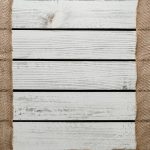You might not realize how deeply cambric production influences economies around the globe. As demand for this versatile textile grows, it creates jobs and stimulates local industries, leading to improved living standards in many communities. But the benefits extend beyond just employment—think about how increased exports can bolster a nation's economic resilience. Yet, the future of cambric production isn't without challenges. What factors could shape its trajectory, and how might they impact the broader economic landscape?
Table of Contents
Overview of Cambric Production
Cambric production, a process that dates back to the 17th century, involves weaving fine linen or cotton into a lightweight fabric known for its smooth finish and versatility.
You might appreciate that this fabric, often used for shirts, handkerchiefs, and delicate undergarments, is characterized by its tight weave and soft texture.
To create cambric, manufacturers begin by selecting high-quality fibers, ensuring durability and a refined look. The weaving process typically employs a plain weave technique, which contributes to the fabric's strength and fine surface.
After weaving, the fabric undergoes various finishing processes, such as bleaching and calendaring, to enhance its appearance and touch.
In modern production, you'll find that technology plays a significant role. Automated looms and advanced dyeing techniques increase efficiency and reduce production costs.
This evolution not only meets the growing demand for cambric but also allows for innovative designs and colors.
As you explore cambric further, you'll discover its enduring appeal and importance in the textile industry, making it a staple fabric that balances tradition and contemporary fashion.
Historical Significance in Economies
The production of cambric has significantly influenced economies throughout history, shaping trade practices and textile industries in various regions. By catering to the needs of both local and international markets, cambric became a crucial commodity, boosting economic growth and fostering innovation. You'll find that its lightweight, versatile fabric has played a vital role in different cultures, creating a ripple effect in diverse economic landscapes.
Cambric's introduction in Europe revolutionized the textile market, leading to increased demand for cotton.
The trade of cambric textiles established critical trade routes, facilitating commerce between regions and countries.
It contributed to the rise of textile manufacturing hubs, as artisans and factories began specializing in its production.
Cambric helped promote the concept of fashion, influencing consumer behavior and driving demand for quality textiles.
The economic impact of cambric production extended beyond textiles, as it encouraged the growth of related industries, such as dyeing and finishing.
Understanding cambric's historical significance provides insight into how textile production can transform economies, highlighting its lasting influence on trade practices and industry development.
Job Creation and Employment Opportunities
Cambric production's growth directly leads to local job creation, providing you with new employment opportunities.
You'll also notice the rise of skill development programs that equip workers with valuable expertise.
This sector not only strengthens the economy but also promotes diversification, benefiting the community as a whole.
Local Job Growth
As local cambric production ramps up, you'll notice a surge in job opportunities that can significantly boost the community's economy. This growth isn't just about manufacturing; it encompasses a variety of roles that cater to different skill sets. New businesses spring up to support this production, creating a vibrant job market.
Here are some key areas where you'll see growth:
- Manufacturing Positions: With increased production, factories need more hands on deck, leading to jobs in textile manufacturing.
- Logistics and Distribution: As more cambric is produced, you'll need professionals to manage shipping and inventory.
- Retail Opportunities: Local stores will expand their offerings, requiring sales staff and management.
- Support Services: Businesses will demand services such as accounting, legal advice, and marketing, creating professional roles.
This job growth fosters a sense of community and enhances the overall quality of life, as more residents find stable employment and contribute to local initiatives.
Your involvement in this evolving landscape can help shape a prosperous future for everyone.
Skill Development Programs
Investing in skill development programs not only prepares local workers for the growing cambric industry but also enhances their employability across various sectors. By offering targeted training, these programs equip you with the necessary skills to meet industry demands. This ensures you're not just filling jobs but thriving in your role.
You'll find that these initiatives often focus on technical skills, such as textile production techniques and quality control, as well as soft skills like teamwork and communication. As you participate in these programs, you'll gain hands-on experience that makes you more attractive to employers.
Moreover, skill development programs can lead to job creation within the community. As the cambric industry expands, companies will seek skilled labor, creating more employment opportunities. This not only benefits you as an individual but also contributes to the overall economic stability of your area.
Economic Diversification Benefits
Expanding the cambric industry fosters job creation and opens up a wealth of employment opportunities for local communities. As more companies invest in cambric production, you'll see immediate benefits in your region. This growth not only boosts the economy but also enhances the quality of life for many individuals.
Consider the various roles that may emerge:
- Manufacturing Jobs: Increased demand for cambric leads to more positions in factories.
- Supply Chain Opportunities: New logistics and transportation jobs arise as products move from production to retail.
- Retail Positions: As cambric products become more popular, local stores may need more staff to meet consumer demand.
- Service Industry Growth: More workers in the cambric sector means increased spending in local services, like dining and entertainment.
Impact on Local Communities
When you look at cambric production, you'll see its impact on local communities can be profound.
It creates job opportunities that boost the local economy and encourages investment in community projects.
These benefits help strengthen the fabric of the community, making it thrive.
Job Creation Opportunities
Cambric production generates significant job opportunities that can revitalize local communities and boost their economies. When you invest in this industry, you're not only creating jobs but also fostering a sense of pride and purpose among local workers. The influx of employment leads to various positive outcomes that extend beyond mere numbers.
Direct Employment: Manufacturing facilities require a diverse workforce, from skilled labor to administrative positions.
Supply Chain Jobs: Increased production demands create opportunities for suppliers and transport services, further expanding job prospects.
Local Business Growth: With more people employed, local businesses—like restaurants and retail stores—experience increased patronage, leading to more jobs.
Skill Development: Training programs associated with cambric production enhance the skill set of the workforce, making them more employable in other sectors.
Community Engagement: Employment in this field encourages collaboration among local organizations, fostering community spirit and involvement.
Community Investment Benefits
Investing in cambric production not only strengthens local economies but also enhances community cohesion and well-being. When businesses set up in your area, they often engage with local suppliers and services, creating a ripple effect that boosts other local enterprises. You'll notice improved infrastructure, as investments in production often lead to better roads and utilities that benefit everyone.
Moreover, these investments spark community initiatives. Companies frequently sponsor local events, sports teams, or educational programs, fostering a sense of belonging and pride within the community. You'll see a strengthened social fabric as residents come together to participate in these activities.
Additionally, with the influx of jobs comes increased disposable income for local residents. As people earn more, they're likely to spend on local businesses, from cafes to retail shops, further stimulating the economy.
Influence on International Trade
Driving economic growth, the production of cambric significantly influences international trade dynamics by creating demand in global markets.
As you explore the impact of cambric, you'll notice how it shapes trade relationships and boosts economic exchanges between countries. This textile's versatility and quality foster competitive advantages, allowing producers to tap into various markets effectively.
Increased exports lead to improved foreign exchange reserves.
Cambric production encourages specialization, enhancing productivity.
It establishes trade networks that connect producers with global buyers.
Demand for cambric attracts investments in technology and innovation.
The growth of cambric markets supports job creation in related industries.
Future Trends and Sustainability
As the global demand for sustainable textiles rises, the future of cambric production is poised to embrace innovative practices that prioritize environmental responsibility and resource efficiency. You'll notice manufacturers increasingly adopting eco-friendly materials and production methods. This shift isn't just a trend; it's a necessity for maintaining competitiveness in a market that values sustainability.
You might see the integration of organic cotton and recycled fibers in cambric production. These materials not only reduce environmental impact but also appeal to eco-conscious consumers. Additionally, advancements in technology, like waterless dyeing and energy-efficient machinery, are becoming standard practices. These innovations help reduce waste and minimize the carbon footprint of production processes.
Moreover, transparent supply chains are gaining traction. You'll find brands sharing their sourcing and production practices, building trust with consumers who are more informed and concerned about sustainability. As a result, you'll likely witness a rise in certifications and eco-labels that signify sustainable practices.
In this evolving landscape, embracing sustainability isn't just a moral obligation; it's an economic opportunity that can drive growth and foster loyalty among consumers who prioritize ethical choices.
Frequently Asked Questions
What Types of Industries Utilize Cambric Fabrics Extensively?
You'll find cambric fabrics extensively used in the fashion industry, home textiles, and medical applications. Designers love its lightweight nature, while healthcare professionals appreciate its durability and breathability, making it ideal for various uses.
How Does Cambric Production Affect Environmental Sustainability?
Cambric production impacts environmental sustainability through resource use and waste generation. You'll notice that sustainable practices, like using organic materials and reducing water consumption, can mitigate negative effects and promote a healthier ecosystem for future generations.
Are There Health Risks Associated With Cambric Manufacturing?
Yes, there are health risks associated with cambric manufacturing. You might encounter exposure to harmful chemicals, respiratory issues, or skin irritations. It's crucial to implement safety measures to minimize these risks in the workplace.
What Are the Primary Materials Used in Cambric Production?
In cambric production, you'll primarily find cotton and linen as the main materials. These fibers are woven tightly to create a lightweight, smooth fabric, perfect for garments and various household items.
How Is Cambric Quality Assessed in the Market?
You assess cambric quality by examining its texture, weave tightness, and weight. You'll also consider factors like color consistency and finish. Customer reviews and market demand can reveal additional insights about its overall quality.
- Who Owns the Gore-Tex Brand? - July 2, 2025
- Does Using a Peet Dryer Ruin Gore-Tex Boots? - July 2, 2025
- What Is the New Gore-Tex Epe Membrane? - July 2, 2025







